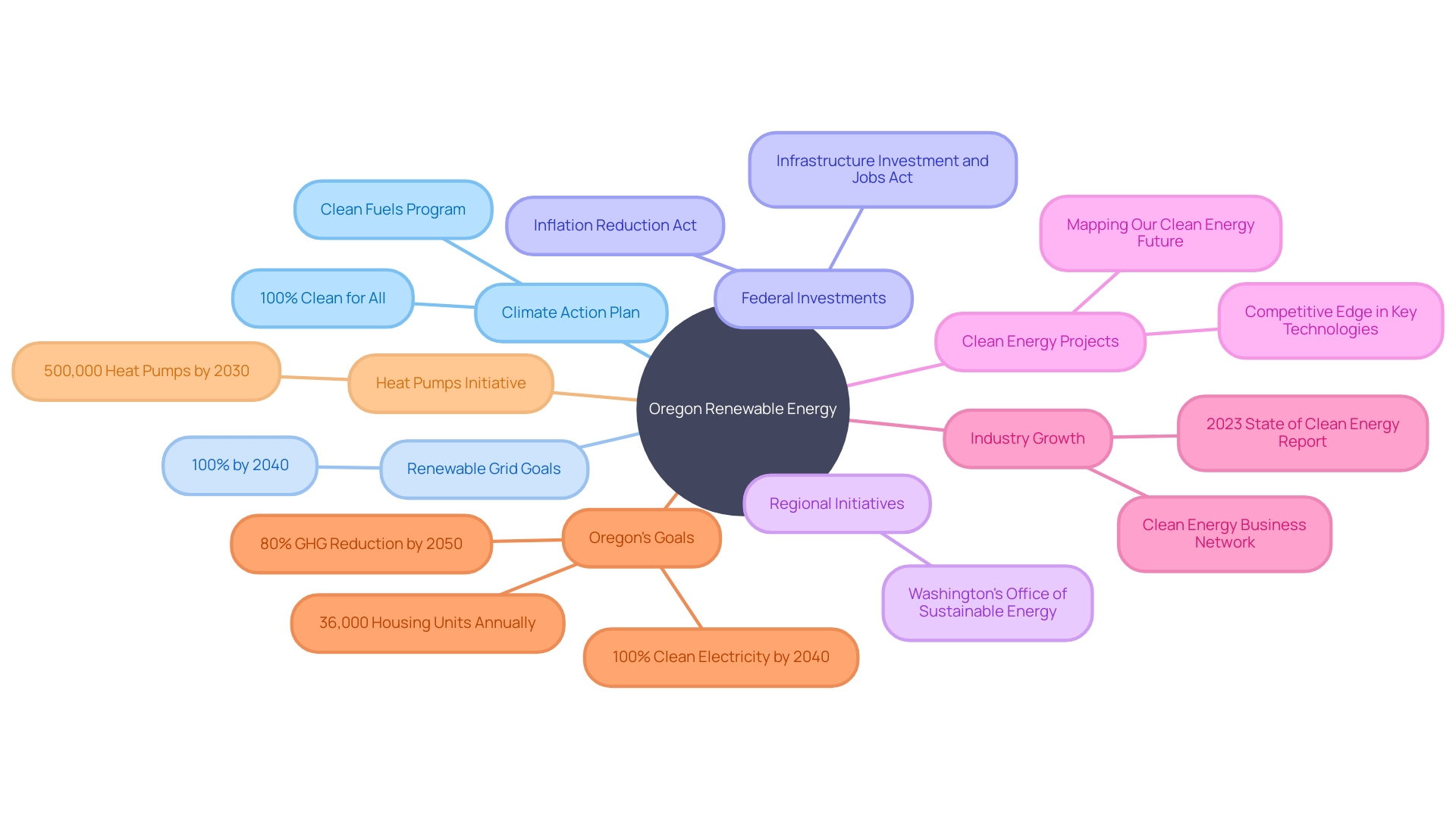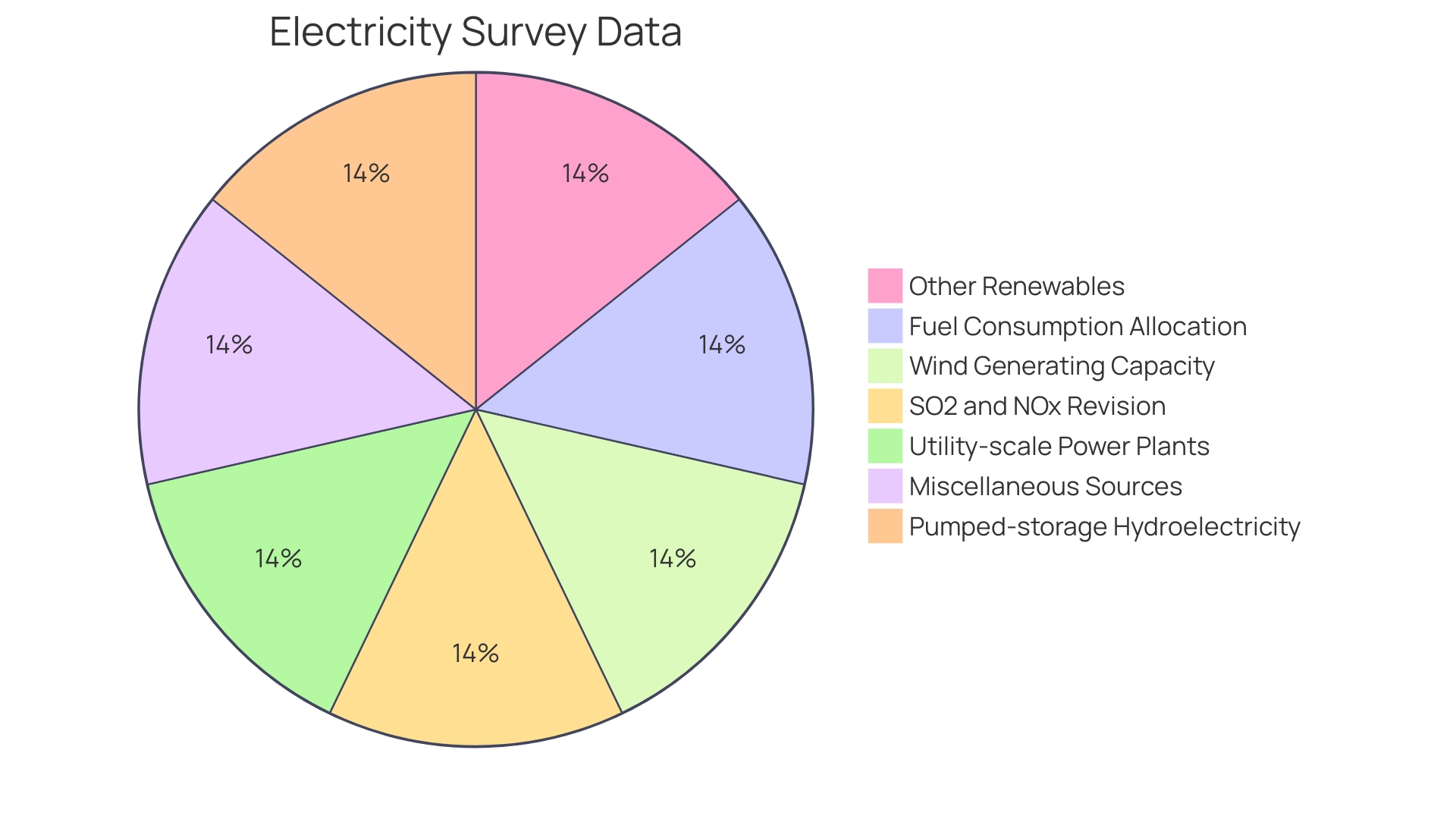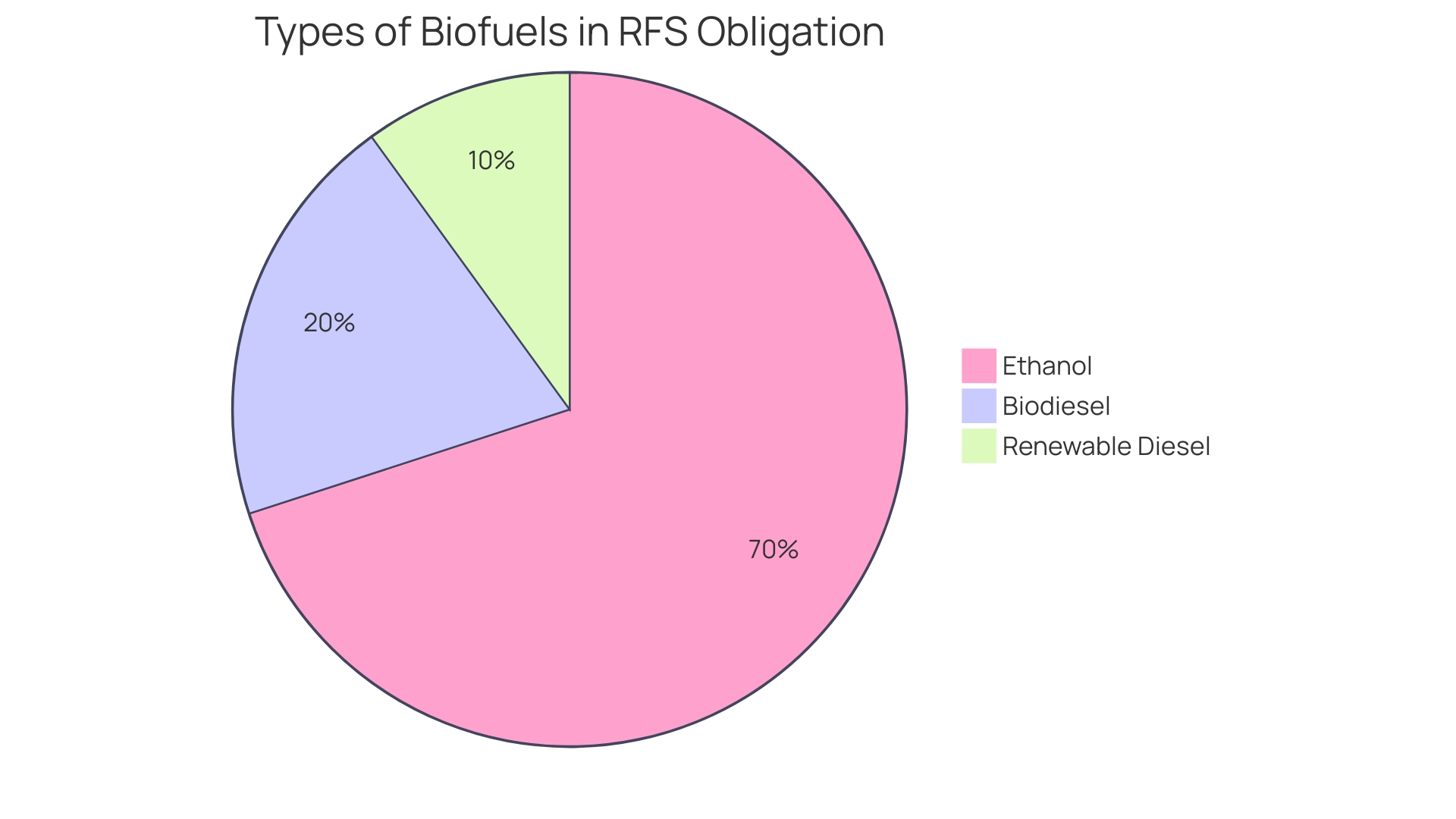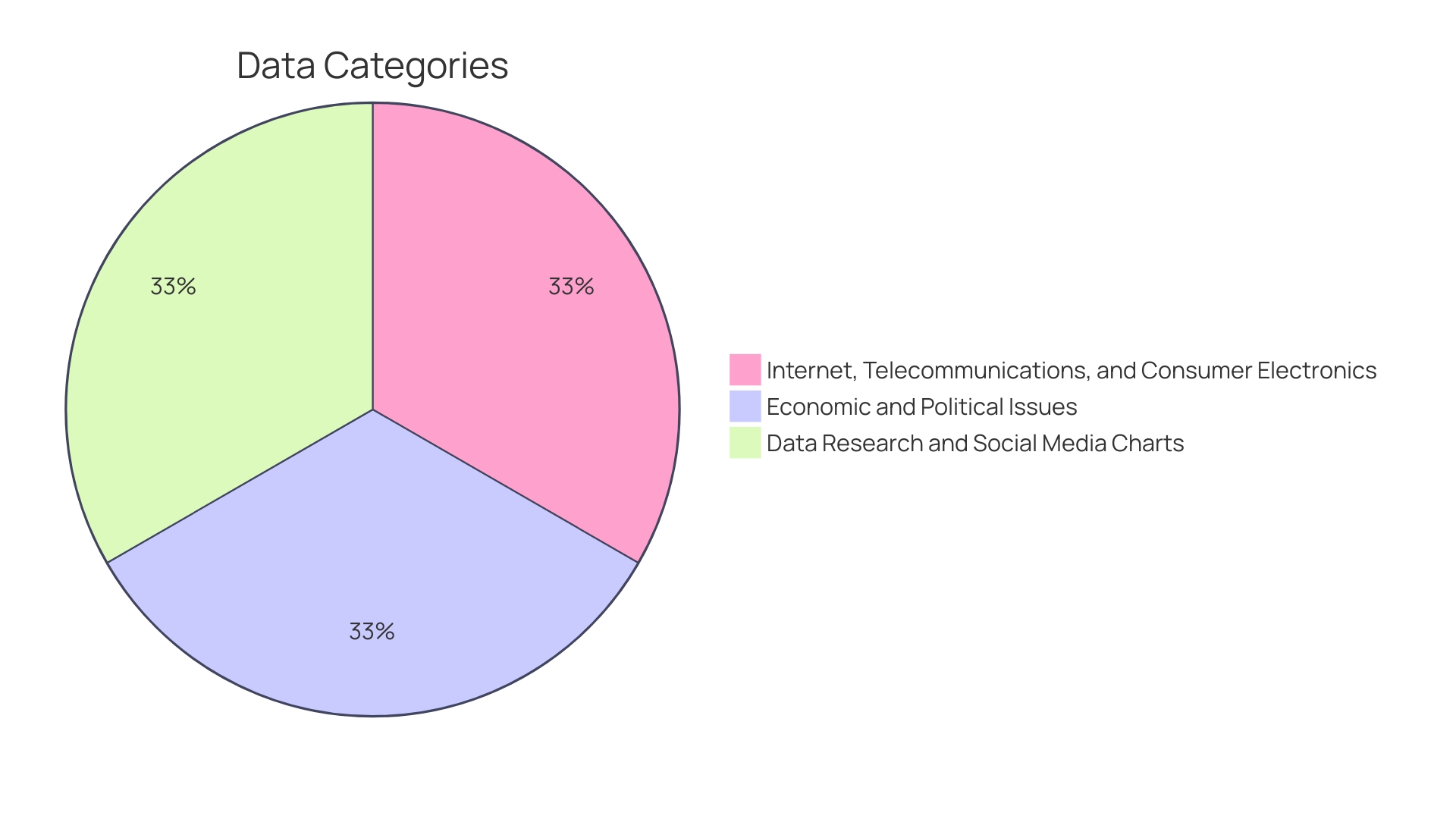Introduction
Oregon's renewable diesel industry is undergoing a dynamic transformation, driven by the state's Climate Action Plan and Clean Fuels Program. These initiatives are shaping the energy landscape by setting ambitious targets and aiming for a fully clean energy grid by 2040. Oregon's commitment to decarbonization is further evidenced by significant investments in renewable fuel initiatives.
This article explores the benefits of renewable diesel, current use and adoption in Oregon, supply and demand challenges, future projections, Portland's Renewable Fuel Standard update, compliance and implementation strategies, and the economic and environmental impacts of renewable diesel. Oregon's multifaceted approach exemplifies the state's commitment to a sustainable energy future and positions it as a leader in the renewable fuels industry.
Oregon's Climate Action Plan and Clean Fuels Program
Oregon's renewable diesel landscape is undergoing dynamic transformation, influenced by its Climate Action Plan and Clean Fuels Program. These crucial initiatives are molding the industry, establishing ambitious goals such as the '100% Clean for All' law, striving for a completely renewable grid by 2040. The state's energy trajectory has been evaluated using a comprehensive statistical model, forecasting diesel-equivalent consumption growth, aligning with economic expansion, while gasoline equivalent consumption is expected to stabilize due to improving economy.
Renewable fuel, a less viscous alternative to traditional diesel suitable for modern engines, is gaining momentum in Oregon. This progression can be traced back to Rudolf Diesel's experiments with alternative energy sources such as vegetable oils, paving the way for today's biodiesel and sustainable diesel. The state's dedication to decarbonization is further demonstrated by investments through the Infrastructure Investment and Jobs Act and Inflation Reduction Act, which inject billions into sustainable energy initiatives.
Oregon's initiatives are mirrored by Washington's Office of Sustainable Energy Sources, which promotes a market for eco-friendly electrolytic hydrogen and alternative fuels through research, workforce development, and community involvement. This office, integral to the Department of Commerce’s Energy Division, is advancing a vision where alternative fuels, including hydrogen—an energy carrier extracted from other materials—are cornerstones of the regional power mix.
Such initiatives are supported by significant advancements in power infrastructure, including offshore wind projects, which provide a stronger and more consistent source of power compared to onshore alternatives. The incorporation of these clean power sources is essential for satisfying the growing request from electric cars, data centers, and other industrial burdens that are progressively fueled by sustainable power.
These advancements in sustainable alternatives are indicative of a wider shift towards eco-friendliness and reduction of carbon emissions, as observed in different industries from maritime to nuclear power, and are integral to worldwide initiatives for achieving net-zero emissions, as exemplified by major corporations such as BP Inc. and the growing investment in sectors dedicated to renewable sources of power in countries like India. The comprehensive approach taken by Oregon and its regional partners exemplifies the multifaceted strategy required to transition to a sustainable future.

Benefits of Renewable Diesel
Renewable fuel, sourced from sustainable feedstocks such as waste fats, vegetable oils, and animal fats, offers a promising path toward reducing reliance on fossil fuels. Its production and utilization come with a significantly lower carbon footprint and diminished emissions of key pollutants like particulate matter, nitrogen oxides, and sulfur compounds. This eco-friendly alternative not only contributes to greenhouse gas reduction but also plays a crucial role in enhancing air quality. Such characteristics correspond with the wider shift in the sector for a transition to more environmentally friendly practices, as observed in different transition projects across the Arctic, where the emphasis on reducing CO2 emissions is of utmost importance. The efficiency of diesel derived from sustainable sources and its contribution to the broader context of environmentally friendly solutions demonstrate the continuous endeavors to standardize methods for assessing the entire life cycle, with studies showing the significant environmental advantages of alternative power technologies. This aligns with industry-wide movements, such as the maritime sector's stringent emission regulations and the transition to sustainable sources to ensure environmental justice and energy equity, as emphasized by the U.S. Department of Energy. Moreover, the affordability and dependability of sustainable power sources have been acknowledged as vital elements in advancing public health and well-being, with the anticipation that the expenses of sustainable power sources will continue to decline.
Current Use and Adoption in Oregon
Oregon's fuel landscape is steadily moving towards sustainable petroleum, a proof of the state's dedication to decreasing emissions and promoting a green economy. With its eco-friendly characteristics, alternative fuel is progressively fueling commercial fleets, public buses, and vital sectors such as agriculture and construction. This transition echoes the sentiments of industry leaders like Brett Greene of PGE, who recognizes the necessity for a diversified mix that extends beyond traditional wind and solar solutions.
In the pursuit of a well-rounded energy portfolio, Oregon is harnessing the adaptability of renewable fuel, derived from organic oils and fats through an advanced chemical procedure. The compatibility of this substance with modern diesel engines drives its adoption, aligning with Rudolf Diesel's original vision exhibited at the 1900 World's Fair with a prototype powered by peanut oil. Modern advancements have made it a tangible reality for Oregon's industries to utilize a substance that is less viscous and more suitable for today's engines.
The state's efforts are supported by significant legislative initiatives, as seen with the electrification of vehicles being prioritized to tackle climate pollution from transportation. The suspension of the Oregon Clean Vehicle Rebate Program in May 2023 due to unprecedented demand underscores the urgency for further investment in clean energy incentives. These efforts are vital for sustaining the progress in shifting towards low-emission vehicles and energy sources.
The Washington office for sustainable energy offers a plan for promoting a green energy market through collaborations, study, and community involvement. Their all-encompassing strategy for market acceleration suggests the possibility of a comparable path in Oregon, with eco-friendly fuel playing a crucial part. Furthermore, given that 12% of light-duty vehicles nationwide use alternative fuels according to the Department of Energy, the significance of the use of sustainable diesel in Oregon's energy combination cannot be overstated. As sectors throughout the state continue to embrace sustainable fuel, Oregon is not only contributing to a more sustainable environment but also paving the path for resilience and economic development.

Supply and Demand Challenges
In Oregon, the growing alternative fuel sector encounters a convergence of supply and demand challenges that are crucial to the state's energy landscape. The manufacturing capability for alternative fuel is limited, raising concerns about meeting the increasing demand effectively. This demand is shaped by a complex interplay of market forces, including the volatility of oil prices, regulatory frameworks, and shifts in consumer behavior.
Renewable fuel, mainly composed of vegetable oils, is a bio-based fuel that aligns with government incentives and regulations aimed at reducing carbon emissions. In Oregon, the push for sustainable power is part of a broader strategy to electrify processes and enhance energy efficiency across various sectors, a move that is echoed by the state of Washington's Office of Renewable Fuels.
The challenges in expanding sustainable fuel production are complex, requiring a holistic approach to enhance material efficiency, foster recycling, and promote eco-design. As the global transition of power accelerates, regions like the Pacific Northwest are exploring various sources of electricity, including wave power, which provides a reliable supply of electricity that complements seasonal generation of sustainable power.
In the context of bio-based alternative to traditional petroleum-based diesel, the aim is to strengthen the infrastructure and market for bio-based diesel alternatives, as articulated by the Energy Division of the Department of Commerce. The pursuit of a sustainable power portfolio is further supported by federal investments through the Infrastructure Investment and Jobs Act and Inflation Reduction Act, highlighting a nationwide commitment to fuel initiatives.
As alternative fuel becomes an essential component of the energy blend, stakeholders in Oregon must navigate these complexities to ensure a stable and sustainable supply that meets the evolving energy demands of the region.
Future Projections and Production Capacity
Oregon is ready to emerge as a frontrunner in the production of sustainable fuel. With progress in technology, supportive policy frameworks, and growing market demand, the state has the potential to greatly expand its alternative fuel output. The aviation sector, facing challenges with battery range and weight, is turning to sustainable electric aviation alternatives compatible with existing aircraft and infrastructure. VTT Research Professor Juha Lehtonen highlighted the success of the E-Fuel project, which advanced green hydrogen production, CO2 capture, and e-fuels synthesis, demonstrating the feasibility of integrating these technologies for e-fuel production. This advancement highlights the requirement for Oregon to contemplate comparable investments and infrastructure enhancements to improve its production capabilities of eco-friendly fuel.
The shipping industry, accountable for 3% of worldwide greenhouse gas emissions, demonstrates the pressing requirement for substitute energy sources such as sustainable petroleum. Heavy oceangoing vessels, which cannot be directly electrified due to their need for large, heavy batteries, present a significant opportunity for diesel to make an impact. As indicated by the EU Catalyst Partnership and backing from organizations like the European Investment Bank and the Swedish Environmental Protection Agency, there is a distinct path ahead for developing non-fossil energy sources.
Moreover, the latest legal measures, specifically the Infrastructure Investment and Jobs Act of 2021 and the Inflation Reduction Act of 2022, have allocated billions of dollars to sustainable energy initiatives. This legislative support could be crucial for Oregon as it aims to expand its alternative fuel production. The Office of Fuels in Washington has shown how a state-level commitment to advancing a market for sustainable fuels can result in partnerships, research, workforce development, and community engagement, providing a model for Oregon to follow.
To take advantage of these opportunities, Oregon must tackle the requirement for a strong infrastructure capable of supporting enhanced production and distribution of eco-friendly fuel. This involves the growth of facilities, the creation of transportation and storage solutions for hydrogen as a carrier, and the incorporation of alternative fuel into different industrial processes. The state's strategic approach to sustainable fuel expansion will not only contribute to reducing its carbon footprint but also position it as a leader in the transition to a cleaner future.
Portland's Renewable Fuel Standard Update
Portland's dedication to clean energy is reflected in its Renewable Fuel Standard (RFS), which has recently highlighted the promotion of alternative fuel as a crucial element in Oregon's energy transition. The RFS has established a structure that requires the mixing of sustainable fuels into the transportation supply, thereby strengthening the market for alternative diesel. This policy is a clear response to the growing demand for diesel-equivalent energy sources, which, according to statistical models, is set to rise in correlation with economic growth, while gasoline equivalent energy consumption is predicted to plateau due to increasing efficiency.
Fuel providers in Portland must navigate the RFS's compliance landscape, which is shaped by evolving regulations that reflect the ambitious goals set out by both the Infrastructure Investment and Jobs Act (IIJA) of 2021 and the Inflation Reduction Act (IRA) of 2022. These actions have directed billions into initiatives focused on sustainable sources, showcasing a countrywide shift towards cleaner power options. Portland's RFS not only affects the local market for non-renewable fuel but also aligns with broader trends in the adoption of sustainable energy.
The sustainable fuel industry in Oregon is positioned at the forefront of a transition towards more eco-friendly fuels. With diesel's historical roots tracing back to Rudolf Diesel's experiments with vegetable oils, the modern version of diesel aligns with environmental goals through biodiesel and sustainable diesel—both derived from organic oils and fats. This shift is a component of a broader movement within the sector, as illustrated by recent changes in the shipping industry towards reducing emissions and the ongoing conversation about diversity in green jobs.
As Portland continues to adapt and refine its RFS, the consequences extend beyond state borders, shaping the landscape of sustainable power and setting a precedent for how cities can integrate sustainability into their economic fabric. The sustainable sector in Oregon is a testament to this transformation, harnessing the potential of fuels to drive forward an era of resilience and innovation.

Compliance and Implementation Strategies
Adhering to volume obligations and establishing effective reporting mechanisms is a complex effort in Oregon to comply with environmental regulations for alternative fuel. The integration of renewable diesel must align with Oregon's ambitious legislation focused on clean power, such as the '100% Clean for All' law, which mandates a transition to 100% clean energy by 2040. This law requires new clean resources like solar, wind, and innovative storage technologies like batteries. Moreover, the advancement of offshore wind, with its year-round reliability, exhibits potential as a strong addition to onshore renewables, potentially decreasing the land needed for production.
Moreover, the Office of Renewable Fuels in Washington aims to expedite the market for green electrolytic hydrogen and renewable fuels. This initiative, supported by the Infrastructure Investment and Jobs Act (IIJA) of 2021 and the Inflation Reduction Act (IRA) of 2022, emphasizes the importance of partnerships, research, workforce development, and community engagement in achieving clean energy goals.
In the context of environmental compliance, businesses and individuals have the right to request a Final Statement of Reasons (FSOR) regarding proposed regulations, ensuring transparency and accessibility in the regulatory process. This reflects a broader industry trend, as highlighted by the Power Generators Air Coalition (PGen), which emphasizes the need for power generators to actively engage in managing air emissions and contributing to the regulatory discourse without promoting specific power policies.
Statistical analysis of state electricity profiles reveals a disaggregated approach to reporting renewable sources like wind and geothermal. The method of allocating fuel consumption has evolved to more accurately reflect the efficiency of electric power production, as evidenced by changes in the categorization of wind generating capacity and the revision of SO2 and NOx values for consistent methodology. These detailed statistics and methodologies are critical for stakeholders seeking to navigate the complexities of environmental compliance and contribute to a reliable, clean, and affordable energy system.

Economic and Environmental Impacts
Renewable fuel is a pivotal component in Oregon's drive towards a sustainable future, presenting a robust solution to both economic and environmental challenges. Mainly derived from vegetable oils, alternative fuel is closely associated with biodiesel, with over 80 percent coming from soybean and canola oil, substances similar to household cooking oils, while the rest is mainly from animal fats and other byproducts like corn oil from ethanol production. This bio-based fuel is not just a sustainable source but also a major contributor to job creation and investment opportunities, enhancing the state's economic outlook.
Oregon's commitment to renewable diesel aligns with its Climate Action Plan and Clean Fuels Program, aiming to slash greenhouse gas emissions and enhance air quality. The state's strategy reflects a larger global shift towards green power, as seen with companies like Novamont, which produces biodegradable bioplastics, thus circumventing the environmental toll of traditional fossil-based packaging materials. This shift away from fossil fuels is reflected in personal stories from areas previously dependent on the coal industry, emphasizing a shift from one generation to the next towards more sustainable sources of power.
Supporting this transition, legislative initiatives such as the Infrastructure Investment and Jobs Act (IIJA) of 2021 and Inflation Reduction Act (IRA) of 2022 have directed multi-billion dollar investments into alternative energy initiatives. These efforts are designed to foster market growth for green energy solutions, including hydrogen—a versatile energy carrier. The Office of Sustainable Fuels in Washington has been instrumental in promoting green electrolytic hydrogen and alternative fuels through various partnerships, research initiatives, workforce development, and community engagement.
Furthermore, the environmental advantages of alternative fuel are supported by its capacity to decrease carbon emissions, a crucial measure towards achieving net-zero goals. For instance, BP Inc.'s ambitious goal to achieve net-zero emissions by 2050 is a testament to the industry's evolving priorities. Moreover, emerging technologies like wave power harness the vast potential of the oceans, showing that sustainable fuel is just one aspect of a diversified power portfolio essential for a viable future.
The economic and environmental impacts of sustainable petroleum in Oregon provide a model for other states and countries, highlighting the tangible benefits of transitioning to a green economy. As Oregon continues to implement its Climate Action Plan and Clean Fuels Program, renewable diesel stands out as a sustainable and economically advantageous energy solution.
Conclusion
In conclusion, Oregon's renewable diesel industry is undergoing a dynamic transformation driven by the state's Climate Action Plan and Clean Fuels Program. Renewable diesel offers a promising path towards reducing reliance on fossil fuels and enhancing air quality. Oregon is progressively shifting towards renewable diesel, with adoption in commercial fleets, public transportation, and vital sectors like agriculture and construction.
Challenges in supply and demand must be addressed through a comprehensive approach that increases material efficiency, promotes recycling, and encourages eco-design. Oregon has the potential to become a leader in renewable diesel production with advancements in technology, supportive policy frameworks, and increasing market demand.
Portland's Renewable Fuel Standard (RFS) plays a crucial role in promoting renewable diesel as a key component in Oregon's energy transition. Compliance with environmental regulations requires fuel providers to adhere to renewable volume obligations and establish effective reporting mechanisms. The state must also invest in a robust infrastructure capable of supporting increased production and distribution of renewable diesel.
The economic and environmental impacts of renewable diesel in Oregon are significant. It contributes to greenhouse gas reduction, enhanced air quality, job creation, and investment opportunities. Oregon's commitment aligns with its Climate Action Plan and Clean Fuels Program, reflecting a global shift towards green energy.
Overall, Oregon's multifaceted approach exemplifies its commitment to a sustainable energy future and positions the state as a leader in the renewable fuels industry. By embracing renewable diesel, Oregon contributes to a cleaner environment, energy resilience, and economic growth. As the state continues to implement its Climate Action Plan and Clean Fuels Program, renewable diesel stands out as a sustainable and economically advantageous energy solution.




